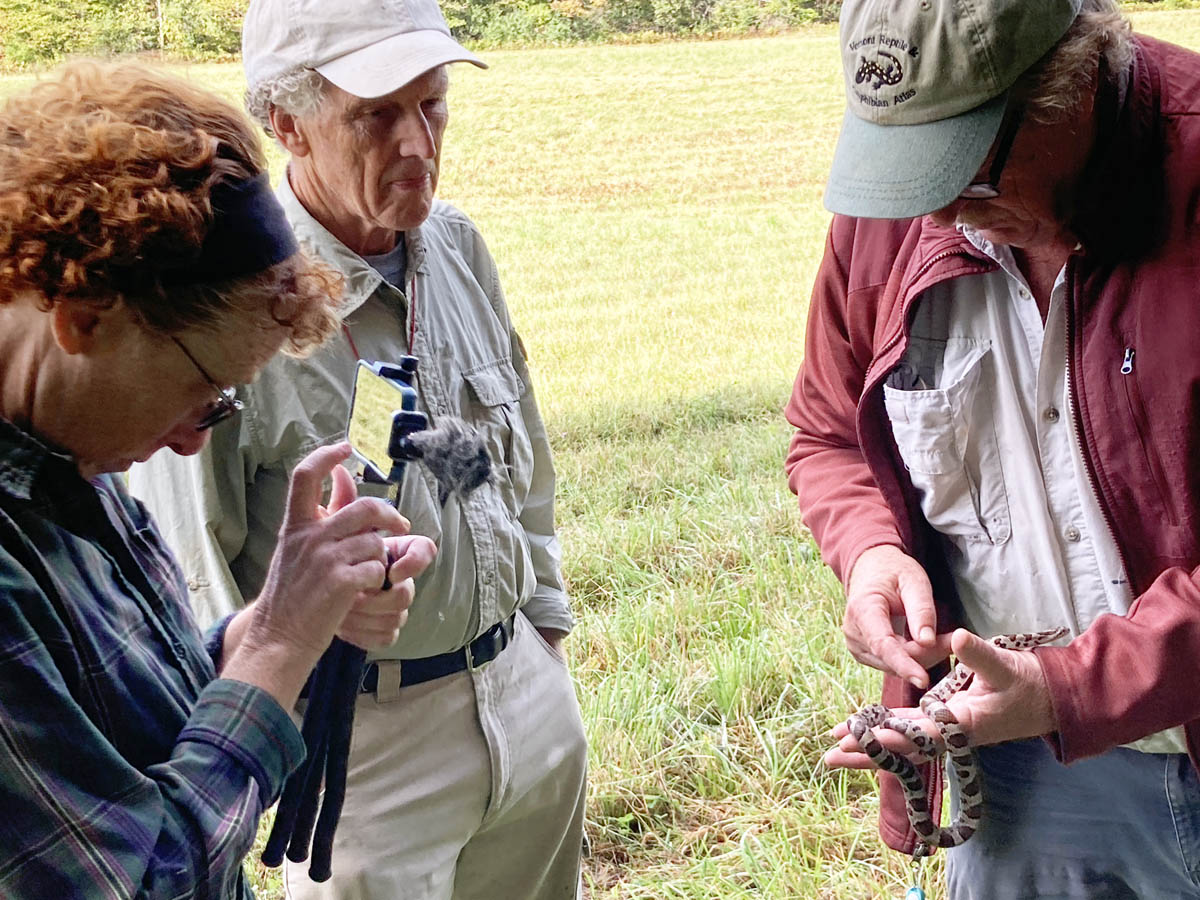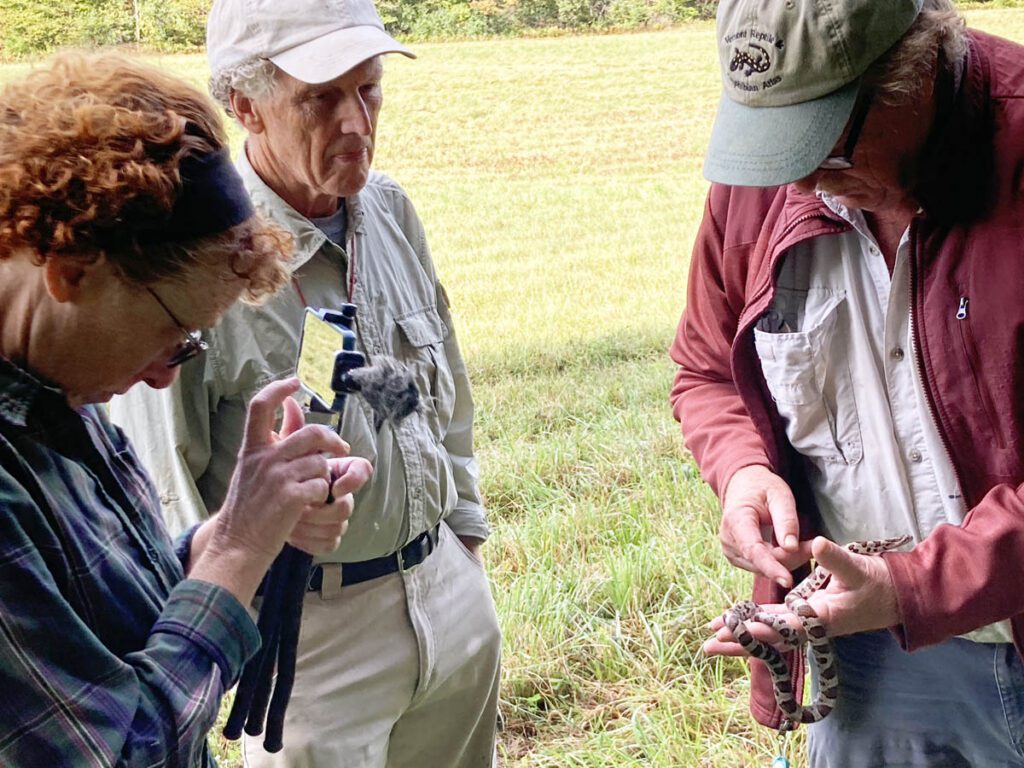
This fall, videographer Jill DeVito joined VFF’s herpetology research team as they conducted one of their weekly snake surveys on VFF land in Lincoln, part of the on-going Colby Hill Ecological Project. Learn more and watch the video below.
Quick as a mountain stream, a slender snake whisks across the gray slate toward the cover of tall grasses. But researcher Erin Talmage’s hand is quicker. The young snake twines through her fingers as she pushes to her feet. Leaning in for a look, herpetologist Jim Andrews says, “Another young-of-the-year garter.”
Videographer Jill DeVito quietly records the scene as Erin hands the snake to Jim and pulls a narrow measuring tape from her pocket. Jim unfurls the snake along the tape and measures the distance from snout to vent (cloaca) and from vent to tail. Erin calls out the numbers to Kate Kelly, who waits nearby with clipboard and pencil.

Jim, Erin, and Kelly are in the midst of checking for snakes under the 45 slate covers along this research transect, which Jim established back in 2000, when the Colby Hill Ecological Project was in its infancy. Jim and his team have monitored reptiles and amphibians here ever since, and you can read their research reports on our website. Every other year, they check this transect once a week from late summer until the snakes den up for the winter.
This week, Jill DeVito has joined them to film their work as part of her on-going Youtube video series. Recently transplanted to Vermont, she and her husband are building an off-grid yurt and recording their process in a blog they’ve called “Over the River and Through the Woods.” Jill often intermixes natural history stories with their off-grid narrative, and she’s particularly interested in showcasing animals that many people dislike or fear, like snakes.
Jill’s filming tools are simple and compact–a smartphone mounted on a little tripod with a thumb-sized microphone sheathed in a wind-muffling “dead cat.” In the video below, she puts these tools to great use showcasing Jim’s snake-monitoring research and the Colby Hill Ecological Project as a whole.
Nearly all of the snakes Jim, Erin, and Kate see on this particular autumn morning are young garter snakes, slender as pencils and shorter in length than an outstretched hand. By the time Erin tips back the cover of the 45th slate cover, the team will have added Eastern milksnake and DeKay’s brownsnake to the roster and tallied 29 snakes.
After 23 years of monitoring, Jim has seen a noteworthy change. Absent from the species roster for the first two decades of the monitoring project, DeKay’s Brownsnakes are now likely to show up under the slates during the autumn monitoring. Though this species is relatively common snake in the Champlain Valley, it’s unusual in central Vermont and at higher elevations and is missing entirely from the Northeast Kingdom. Its preferred habitat is overgrown wet meadows adjacent to rocky forests.
The team first found DeKay’s Brownsnake under a slate cover along this monitoring transect in 2019, though the sighting was not during the regular snake-monitoring season. The DeKay’s first showed during a regular monitoring season in 2021, when the species was found twice during the fall survey period. Their recent colonization of this land may be a result of climate change. Long-term monitoring projects like this one allow us to see trends and changes over time.
Jill’s effort and freely given video offering are beautiful examples of commoning–stepping up with the skills and energy to care for our home place. Thank you, Jill, for the time and care in creating this video. And thank you Jim, Kelly, and Erin for your patient, loving, meticulous research over all these years.







